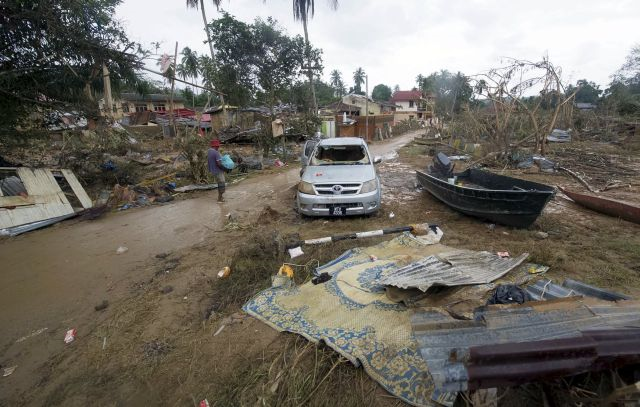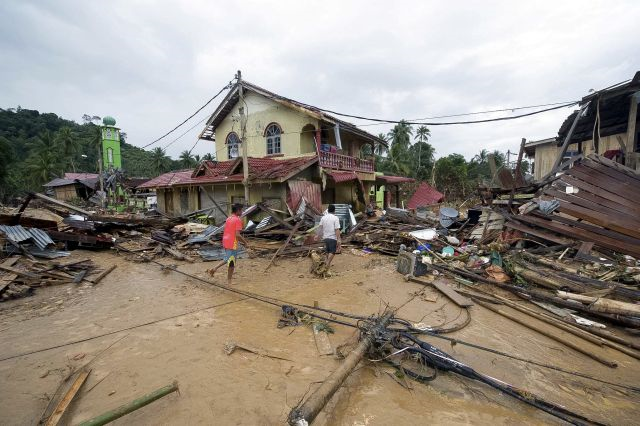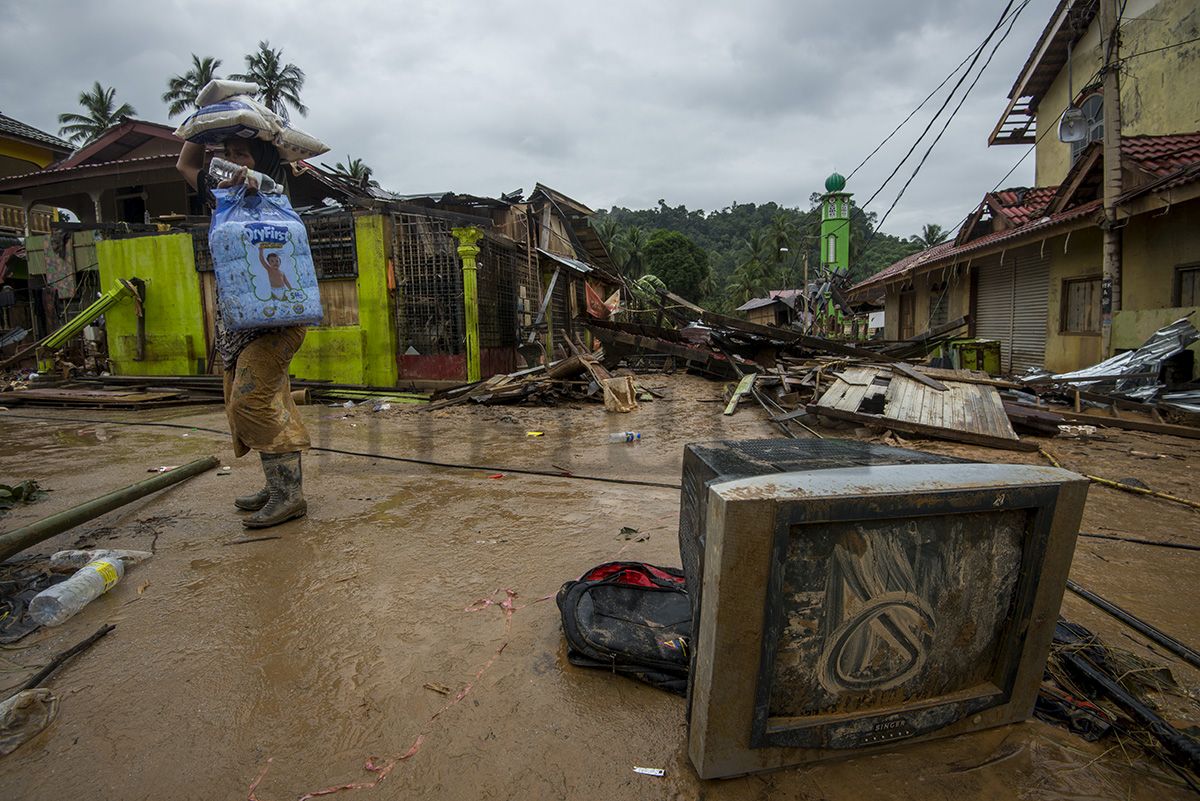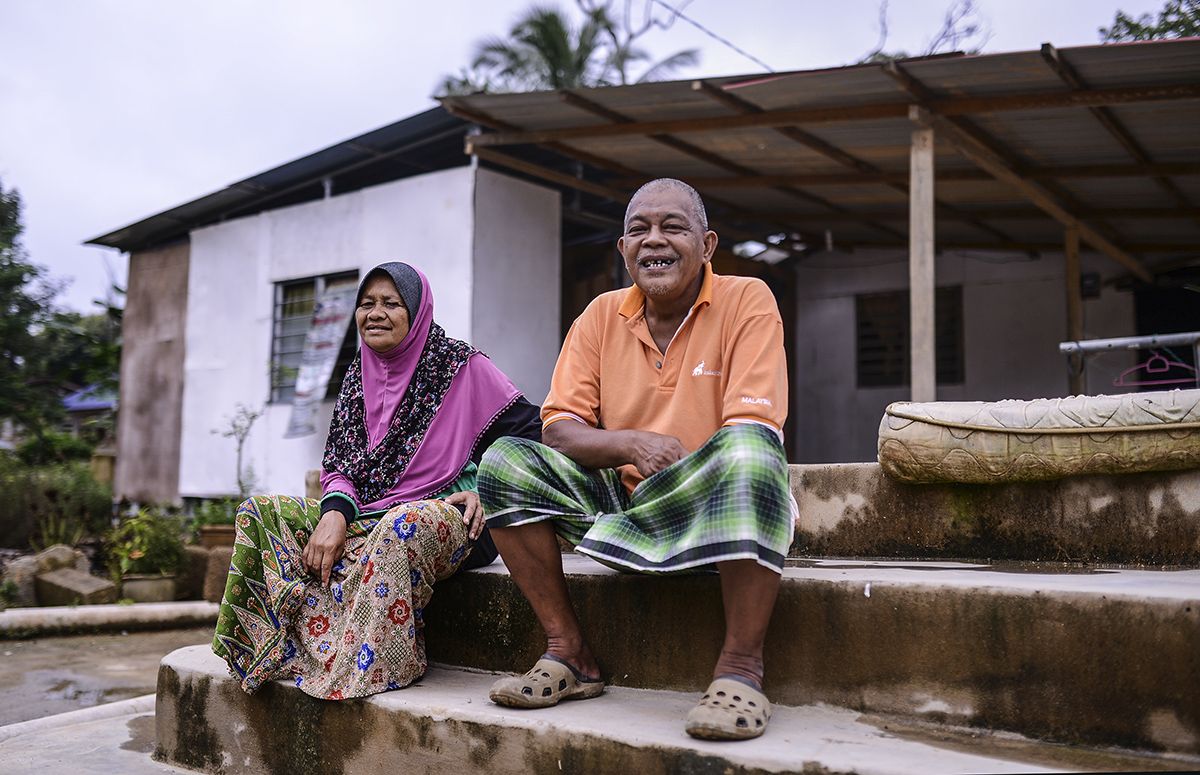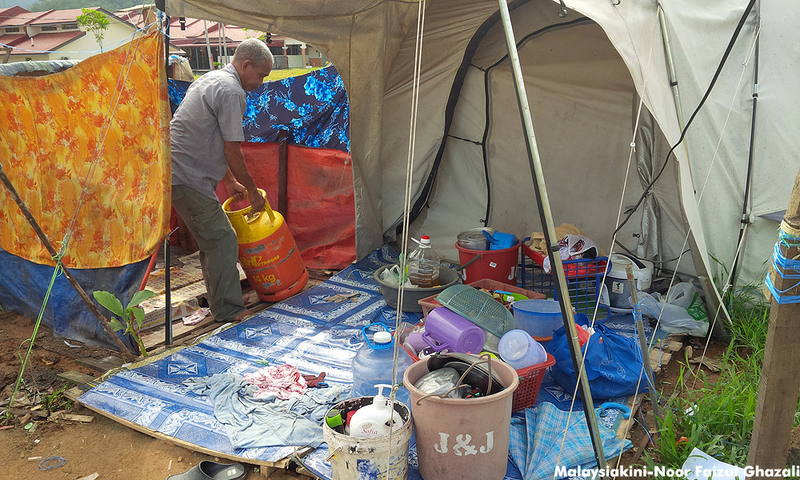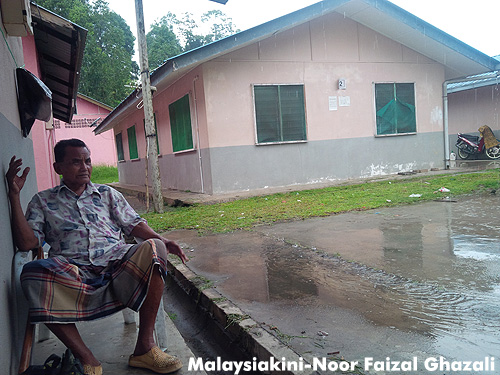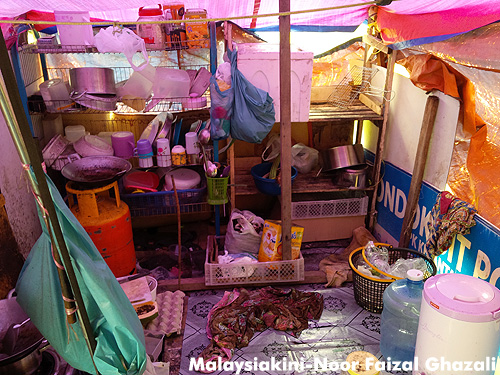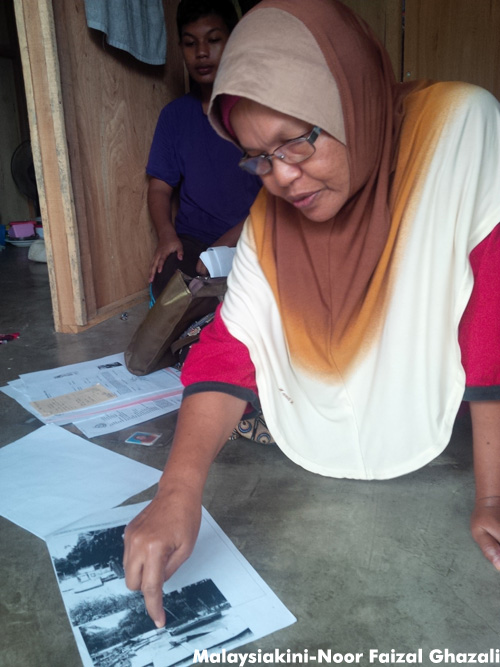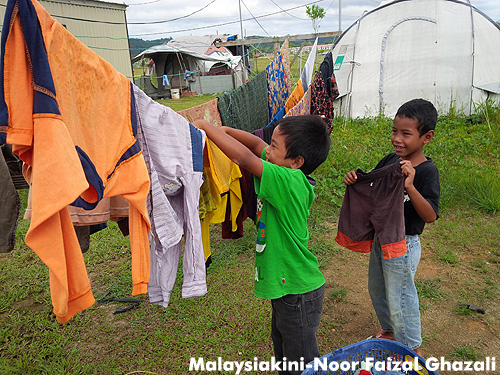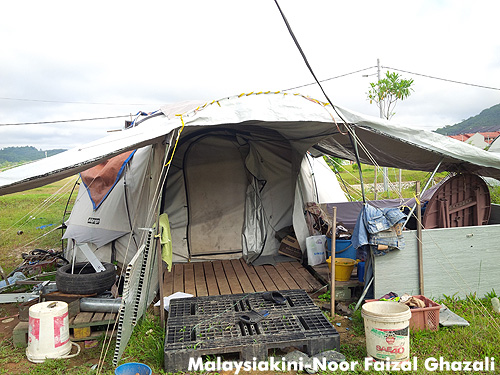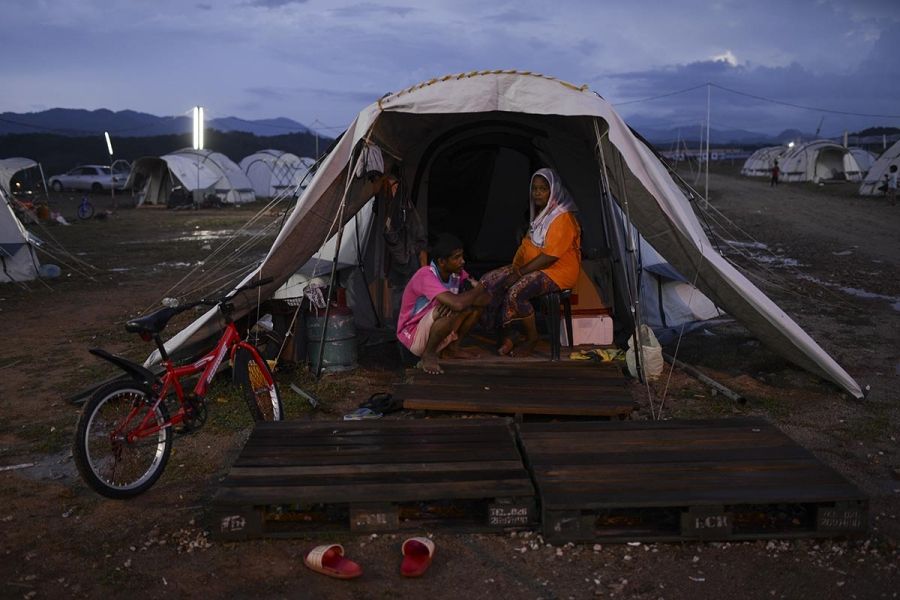Did You Know: Over 500 Kelantan Flood Victims Are Still Homeless One Year After The Floods
Most of the Kelantan flood victims are currently placed at the Taman Etno Botani National Service camp near Gua Musang.
It has been a year since Malaysia faced the catastrophic northeast monsoon rains last December, which left thousands homeless, making it the worst ever flood disaster the nation has ever seen to date
The heavy monsoon rains started sometime around 17 December 2014 and lasted till the end of the month, displacing more than 200, 000 people and killing 21.
The east cost states usually have it the worst and last year was no different as Kelantan saw the worst flood in history that forced more than 3,000 people out of their homes, with Sungai Kelantan's water levels reaching up to 34.17 meters. The danger level of the the river is said to be 25 meters.
According to Berita Harian, the damages cost by the floods in Kelantan alone would cost up to RM200 million.
While the rest of the country suffered greatly from the devastating floods, it was Kelantan that had it worst. It had the highest number of evacuees at over 20,000 people, scattered around in all the relief centres in the state.
So, where are the Kelantan flood victims now?
Squatting in tents and living in cramped National Service camps:
Most of the flood victims in other states have comfortably gone back to their daily lives, sleeping and living in their homes again, sometime after the floods last year.
However, the victims in Kelantan were not able to do the same due to the extensive damage caused by the floods, forcing them to remain homeless to date.
Can you imagine spending a year in a 10-by-10 metres space?
That is exactly how almost a 100 Kelantanese families have been living since last year's flood that completely destroyed their homes
Persistent drizzle slowly drenches the compounds of the Taman Etno Botani National Service (PLKN) Camp, some 3km from Gua Musang.
“We still don’t know what will happen to us. We have heard so many things about these new homes we’re supposed to get.
“But it’s all still a blur, we don’t know when we will be able to step into those new homes. Some say by the end of this year, some say next March, others say it may not even be ready in June.
“And now, the flood season has arrived again,” said ex-serviceman, 70-year-old Ab Rahman, (photo), who has been living at the camp since early this year.
If that isn't bad enough, the senior citizens living at the National Service camp are forced to walk for almost a kilometer, everyday, during meal times as the food is served at the dining hall located there
The senior citizen lived with his wife in Kampung Tiong, near Galas, before the flood, and finds there is nothing much for him to do at this camp to while the days away.
“Most of them here go out to work. We are also provided with food and drink every day, so life is better than when we were living in tents before.
‘But of course, it is not as comfortable as living in your own home. We have no other choice, so we wait,” he said.
“I hitch a ride with some neighbours to get food. I’m can’t climb up steep hills anymore. Especially in the rain,” he said.
“They conducted a census before and told us we will be given new houses, but a year has passed and we still don’t know the outcome," said Nik Mah Nik Kob, who has been living at the NS camp with her family since last year
Nik Mah Nik Kob can still see the moment her family home was swept away by the flood.
“Some people will come promising this and that, but we can only wait,” said Nik Mah (photo), who is at the camp with her husband and two children.
They live in space measuring 10 by 10 metres, equipped with beds and single mattresses. Those with bigger families are allocated more space.
Meanwhile, refusing to live in the cramped NS dorms, five families have defied the government's orders by continuing to live in the National Security Council tents
Tired of being kicked around, Kak Ju and her husband decided to stay put in the National Security Council tent with their three children in Bandar Utama, Gua Musang, and bear the risk as the flood season rolls by again.
They are defying the government’s instructions to move to a National Service camp in Taman Etno Botani in the same district.The decision to dig their heels in was not to seek sympathy, she said, but because living in a tent was more comfortable than a cramped dormitory.
“There are less people here now, while it is really cramped there. We’re more comfortable here.
“Even if we move there, we know we would have to shift again when the National Service term starts,” she said when met recently.
“We are like a football, kicked around," said Kak Ju, adding that so many people have offering them new homes, but these offers remain as empty promises to date
“Sometimes we are pushed to the right, and sometimes, we’re pushed to the left,” she said.
“Many people have come to meet us. We’re confused. So many of them claim they will give us homes, even before we were moved here.
“But we still have yet to get a clear guarantee of when we will get these homes. It’s all turning into rumours,” the housewife tells Malaysiakini.
According to Kak Ju, an unnamed NGO once promised the victims rented houses, but nothing materialised out of that too
“We cannot afford to rent a house, rent is just too high. We were once promised rented premises by an NGO, but even that did not pan out,” she said.
Another tent-dweller, who only wants to be known as Abang Lah, said his family was torn over whether to move to the National Service camp. Abang Lah, who is in his 50s, was reluctant to speak to the media, claiming that his statements had been misconstrued before.
“It’s a lot easier for us to run our business if we live here. Space at the National Service camp is limited, we cannot keep our trading wares anywhere.
“We also have a lot of thing to carry, so it is complicated to move,” said the goreng pisang seller.
Shedding light on the messy situation, Abdullah Ismail, special officer to Galas assemblyperson, Ab Aziz Yusuff explained that the victims were moved to the NS camp to ensure that they were taken care of
According Abdullah, the authorities keep tabs on how many people are placed at the camp and this is to ensure that the 500-plus people there get all they need and that their health and hygiene are taken care of.
“Before this, they lived in tents provided by the National Security Council (NSC) at Bandar Utama, but we moved them here so that they can be more comfortable.
“But there are still those who are too stubborn and ignore orders to move,” Abdullah said.
However, some are also tired of moving and would rather rough it out in the tents until they can move to permanent homes.
Will the homeless victims get their promised homes anytime soon?
This photo of a Kelantan flood victim and her son was taken at the Bandar Utama Gua Musang in Kelantan sometime last May
Image via The Malaysian InsiderAbdullah said permanent homes are being built through cooperation between the state and federal governments and NGOs.
The Kelantan menteri besar on Dec 3 handed over the keys to five houses built for flood victims in Tumpat, with the help of corporate sponsors.
The government says 378 of the 720 new houses built with the assistance of NGOs are now occupied.
These houses are in Machang, Tumpat and Pasir Mas, while the houses in Gua Musang and Kuala Krai are still under construction. Pre-construction work is under way in Kota Bharu.


